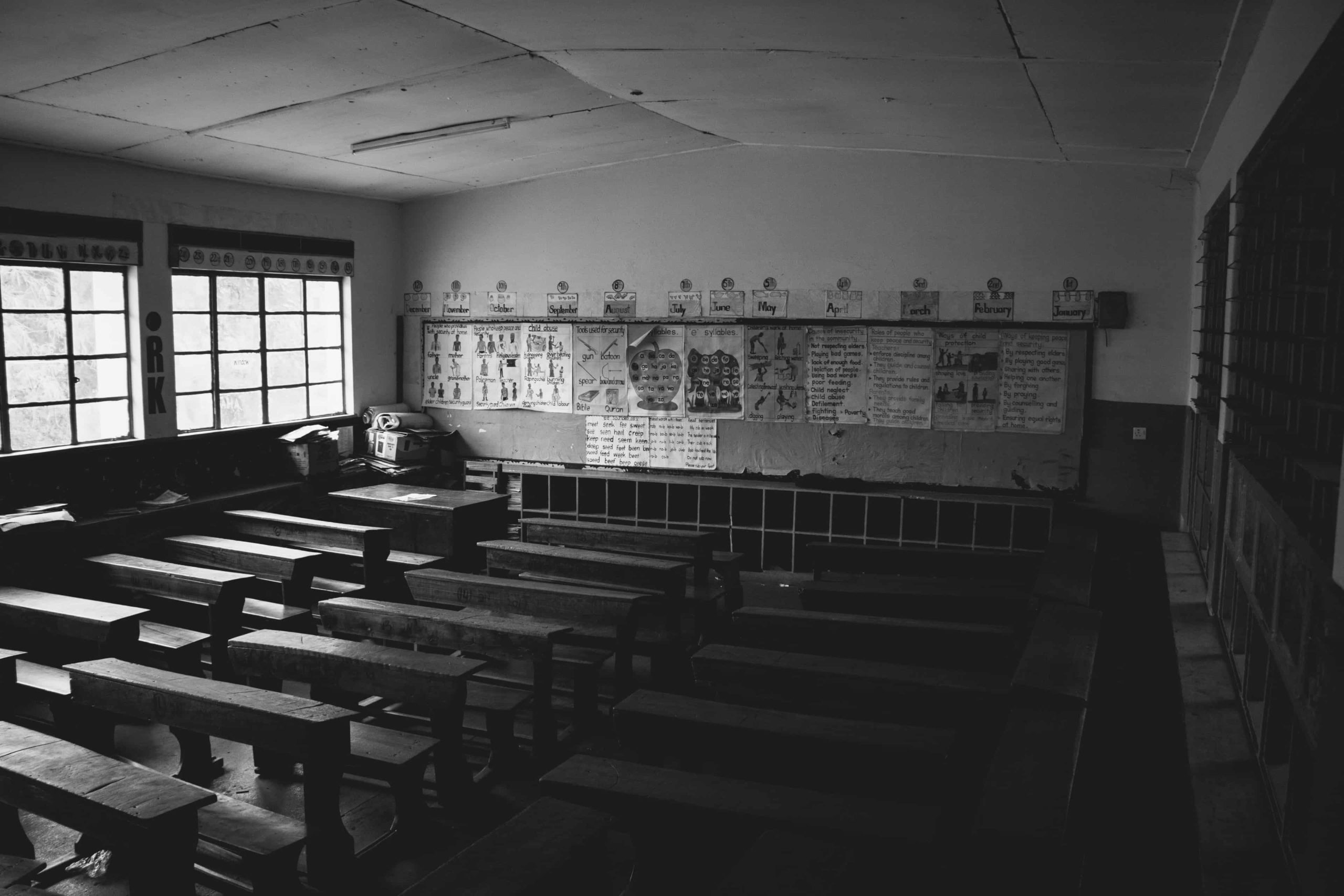
Addressing The Problem with Homework
Many educators are starting to recognize the problem with homework. And while homework is almost universal, there is little evidence that it actually works.

What happens to teaching and learning when schools close? Do we all take some much-needed downtime? Is it even possible to switch to online learning overnight?
The discussion around online learning in K-12 has been simmering for years now. Some have floated the idea of turning snow days into learn-from-home days. Others daydream about teaching from the beach and the four-day school week.
But the spread of COVID-19 has changed the topic from a distant fancy to a burning reality. Online learning for high, middle, and even elementary students is no longer just a moonshot.
Some schools and districts have already announced weeks-long closures. And those who haven’t, are creating plans for if and when schools close.
But can we expect classroom teachers to be successful teaching online? What obstacles will they face? What supports will they need?
The benefit to setting your classes up for online learning at this point, is that we don’t have much to lose. When schools close, we could just send students off with no direction, or hand them a packet of worksheets. But we can also attempt to stay involved with them in some way.
What’s happening right now is new to all of us. No one knows how many schools will be shut down, or how long the impact will last. If you’re read about “flattening the curve,” you know that social distancing isn’t about stopping the spread of COVID – it’s about slowing it down. But slowing it down also means it will be around for longer. We should consider the possibility, however unlikely, that schools may close for the remainder of the school year.
The current crisis also presents an opportunity for teachers to experiment with online learning in a low-stakes way. We’ll all be learning together, through trial and error. When things don’t go as expected, we can adjust and try again the next day. With everything we learn, we’ll be able to use education technology more effectively when we return to the classroom.
One concern about teaching online is that many schools don’t have home access to technology. But school closures can also create an opportunity to bring internet access to more families. Many providers already offer significant discounts based on income, some as low as $5/month. Some provide computers starting at $150. Given the imminent school closings, many internet providers are offering the first two months free for families in need.
And if you’re really worried that online teaching will enable sinister technology companies to shut schools down for good, I have four letters for you: MOOC.
As you prepare to teach online, there are six essentials that will give you the greatest chance for success.
These six essentials are not unique to online learning. They are things we are already doing in our live schools. But we’re also doing a lot of other things. Sometimes we don’t even realize we are doing some of these things.
But when schools close, we will quickly notice their absence. And while we shouldn’t attempt to recreate the classroom experience, we need to step back and think about the big picture. What do our students get out of the school experience? Which of those things can we recreate remotely? Which ones will we have to let go?
The six essentials make up the basic structure of the learning experience. They include the content students are learning, how they interact with that content, and how we interact with them. They will help our students to receive the benefits of school: academic, emotional, and even interpersonal, while learning from home.
As you plan your approach to teaching remotely, don’t expect to be as effective as you would be in a classroom. Measure your success in comparison to sending them off with a packet of worksheets. Which leads to the first essential…
We’re all a bit scared right now. We’re concerned as humans, about our health, our loved ones, and the economy. As teachers, we’re concerned about our students, our schools, and our new jobs as online instructors.
To be successful at teaching online, the most important thing you can do is relax. Some things won’t go as planned. But each week will be a bit better than the last.
In many ways teaching online will be the same as in a classroom. With the right tools, you can still use your favorite lecture or slideshow. And if you like group work, you can do that too. Our students are experts at communicating with each other. So a group project or activity will let them to put those skills to good use and even teach us a thing or two.
A lot of the stress I’m hearing comes from a desire for control. How will we make sure students pay attention? How can we keep them from cheating? The short answer is that we can’t. But the better question is, do we even want to?
We exercise a lot of control over our students on a day-to-day basis. Every week, they spend hours in our room, following our rules, doing our assignments, and asking our permission to use the bathroom. They don’t even choose their teachers or the topics they learn about. A body of research suggests that students lose motivation because there is so much structure. They need space to develop the maturity and responsibility to make better decisions. Maybe now is their chance.
Have fun with it. Try something new. Learn from your mistakes. Your students might just follow your lead.
In school, it’s easy to talk to our students. Whether it’s to provide due dates or explain how an organelle works, we just stand in front of the room and tell them. When they have a question, they raise their hand or stop by our room.
When schools close, the essence of our communication stays mostly the same. But the form changes. The right tools, and some best practices will help you stay in touch without missing a beat.
Many of us already communicate with our students via email and an LMS. When teaching online, consider restricting email to conversations that must be confidential. Imagine every raised hand suddenly converted to email form. Yeah, that will happen.
An LMS, such as Google Classroom, allows you to post assignments and announcements. It will also keep students’ comments and questions organized and visible to their classmates.
When I started using Classroom, I was impressed at how many students would step in to help each other. Someone would post a late night homework question. By the time I saw it the next morning, another student had already answered. This not only saved time, but helped students feel more ownership of the class.
You could probably get by solely with written communication. But live discussion makes online learning much more interesting. Tools like Zoom, Google Meet (formerly Hangouts), and Skype allow you to speak with and even see your students.
If, like me, you need a whiteboard when presenting, just set up your camera at a distance, to record yourself at a whiteboard. To present with a document camera, connect it to your computer and share your screen. (Any conferencing app allows you to screen share).
They key is to talk to your students, not your camera. The trick is that you have to look at the camera, not your screen. Keep sessions sessions, as attention spans are shorter online. It’s important to prep carefully, and to periodically engage your students in discussion.
In higher ed, it’s common for educators to record lectures and post them on line. This is very helpful for students who miss a lecture or want to review it later. But it also creates additional challenges, such as storage, sharing, and personal comfort. I would consider recording a “nice to have” rather than an essential.
In a traditional class, the main informational resource is the text. It tells us how to find the area of a triangle, explains the causes of the French revolution, or recounts the tales of brave Ulysses.
Since we don’t just hand resources over to students, the way we present material can also be considered part of the content. This includes lectures, slideshows, and anything we write on the board.
Students can simply bring home the same informational resources from school. In the case of novels, this is likely the best option. We can also send home textbooks, and have students read to get the information. In theory, we could just mail students textbooks instead of coming to school at all.
But no one really believes we can just send students a textbook for independent learning. They need teachers to explain the content and make it more interesting. And they need us to break it into manageable pieces and hold them accountable. We can do all of these things remotely. Kind of.
But teaching remotely forces us to acknowledge that information is everywhere. Students don’t need textbooks, or even teachers, for information. But they do need help deciding which resources are more reliable, or understanding resources that are above their reading level.
A simple google search will return resources on any topic, in both written and video form. And there are so many education sites designed for this purpose, I won’t even attempt to list them.
You can also consider just giving students a topic, and asking them to find the information. That way they’ll learn about your subject while developing their media literacy skills.
Once our students have information, we need them to do something with it. Typically, they read a passage, then answer comprehension questions. Or we demonstrate a new algorithm, and have them use it to complete a page of exercises.
This approach translates pretty easily to an online setting, and may be a great place to start. Send home a textbook or a packet, and assign a bit each day.
You can also have students complete more traditional exercises in a digital format. One way is to create your own exercises using google forms. These integrate easily into Google Classroom, and can be graded automatically.
If you don’t want to create your own activities, platforms like IXL, Khan Academy, NoRedInk, NewsELA, and EdPuzzle all include pre-loaded questions and activities.
But this raises the issue of focus. When we watch over a room full of students at work, they tend to be more productive, even if the work isn’t terribly engaging. But when they are working from home, there are more distractions, and less external pressure to stay on task.
When schools close, consider it an opportunity to try something new. Inquiry-based learning takes the traditional approach to education and flips it. Rather than starting with information, we start with a problem to be solved.
Memorization requires repetition and external motivators, because our brains resist this type of learning. But IBL actually matches how our brains our designed to learn. Give students a puzzle to solve, and suddenly their brains light up with interest.
The three-part workshop model is a common and effective approach to IBL. Start with a short introduction to generate interest. But be careful not to explain the new skill or content.
Then, present students with a problem or challenge. They can work on the task independently, or you can put them in teams.
When you connect again as a whole class, each team presents their solution. If structured well, students work through misconceptions by completing the task and debriefing with peers. But if they’ve missed anything critical, now is the time to explain it.
The experience you and your students gain will help you apply these approaches when we all return to our classrooms. You can find tasks such as Team Story Analysis, The Sieve of Eratosthenes, and Number Sentence Proofs, on our Teachers Pay Teachers store.
Assessments are one of the biggest concerns teachers have when shifting online. Heck, they were my biggest concern when teaching face-to-face. We want to be fair, but we also want every student to succeed. We worry that students will look for shortcuts and unfair advantages. And grading is an enormous drain on planning time.
All of these problems can multiply when schools close. But it can also be a time to step back and reconsider the purpose of assessments. Do they help us support our students? Or are they a way to control them?
Most of us aspire to the former, but concede to the latter. Imagine that you stopped giving tests. If your thought is “they’d stop working,” your grading system may actually be sabotaging your students.
Eventually, we’ll all realize that testing has little positive impact on student learning. And if we can get by without tests when schools are closed, maybe we can find alternatives we return to our buildings.
Formative assessments are less formal checks-for-understanding. A rubric, such as this Group Work Rubric, can help you turn your observations into gradebook entries.
Projects can also take the place of a traditional summative assessment. The act of creating videos, building models, and writing responses promote deeper understanding than testing does. It’s also more interesting, and harder to pass off someone else’s work as their own.
If you do send your students a unit test, consider it a practice test. When they return, your next unit test can combine content from both units.
Teachers handle a lot of documents. We hand out homework schedules, readings, quizzes, permission slips, and more.
Most of it eventually ends up in piles on our desks. Though many schools have explored ‘going paperless’ for years, we still have a ways to go.
One reason is that digital offerings are not always as good as paper. Few of us want to read a novel on a screen. And while typing papers has long been the norm, it’s hard to write equations or draw diagrams with a keyboard.
Document management is another reason a good LMS is so important. I love Google Classroom because it makes it easy to send and receive documents, or to collaborate in real time.
Teachers who are new to online teaching often accept work submitted by email…at first. Soon they’re drowning in attachments. It’s hard to tell who owes what, provide feedback, or to keep their grades organized. A good LMS makes the whole process easy for teachers and students to navigate.
It used to be that digital assignments were limited to what could be typed. Fortunately, technology is getting better. There are currently a number of ways to draw or handwrite on a computer. Google Classroom (app only) and Kami (web based) allow you to write directly on a .pdf with a finger or stylus.
Just create an assignment in Google Classroom, add a .pdf of a graphic organizer, and each student gets their own copy. When they’re done, their finished work is organized under that assignment.
If you don’t have an LMS, consider at least using shared folders in Google Drive or DropBox. This cuts out some of the steps required to accept work by email.
I’ve done my best to focus on the bright side of online learning. And while it will offers some benefits, there will definitely be some challenges.
When schools close, students will go AWOL. Others will have a hard time staying focused. And many of us will just miss being in a room with our students.
Did someone say technical difficulties?
It will help if you approach your new job with a mixture of confidence and vulnerability. Students need to feel like you know what you’re doing. But if you start off too confident, it will be harder to recover when things go wrong.
Consider setting expectations collaboratively with students. If they’re “your rules,” they will be easier for students to ignore. And hard to change if they don’t work out.
Think about how students should conduct themselves in video chat. It will likely be somewhere in-between classroom decorum and Tik-Tok. And keep the workload light. I hear this constantly from teachers who are a month or so in. Students are simply not going to complete as many worksheets or “exercises” as they would in school. If you get this one wrong, you are likely to start losing students. So try to be understanding, and give them a reason (beyond a grade) to keep showing up.
As you prepare for when schools close, consider the challenges, but also think about the benefits. You’ll have more time to connect with students one-on-one or in small groups. Sit on your comfy chair. Spend less time in traffic. Solve classroom management issues by pressing the mute button.
And you can count on Room to Discover for the strategies, resources, and one-on-one support to make your transition to online instruction as comfortable as possible. Our existing library of content has helped thousands of teachers increase student achievement and engagement.
Soon we’ll be sharing more ways to use our existing resources in an online setting, as well as creating resources specifically designed for online instruction. You can also work directly with one of our expert instructional coaches to help you plan your transition and discuss any challenges you might face.
To stay up to date, sign up for our free newsletter, and join our Facebook Group.
 Jeff Lisciandrello is the founder of Room to Discover and an education consultant specializing in student-centered learning. His 3-Bridges Design for Learning helps schools explore innovative practices within traditional settings. He enjoys helping educators embrace inquiry-based and personalized approaches to instruction. You can connect with him via Twitter @EdTechJeff
Jeff Lisciandrello is the founder of Room to Discover and an education consultant specializing in student-centered learning. His 3-Bridges Design for Learning helps schools explore innovative practices within traditional settings. He enjoys helping educators embrace inquiry-based and personalized approaches to instruction. You can connect with him via Twitter @EdTechJeff

Many educators are starting to recognize the problem with homework. And while homework is almost universal, there is little evidence that it actually works.

Does the Danielson Rubric improve teaching? Maybe it’s an unfair question. After all, it’s a rubric, not a training program. But…

Looking for a simple way to identify effective teaching? Consider how you (or your team) are performing in each of these three critical domains.